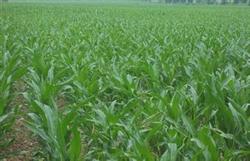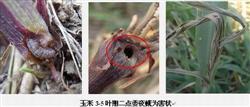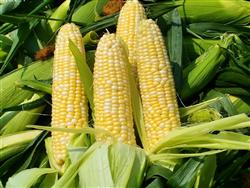How to ensure "one sowing whole Seedling" in sowing Summer Maize

If summer corn wants to realize "one sowing whole seedling", in addition to selecting excellent seeds, we should also pay attention to the following aspects: sowing should not be too deep: the most suitable sowing depth of summer corn is 3mi 5cm. If the sowing is too deep, the low temperature is easy to rett, even if the seedlings can barely emerge, the seeds will consume a lot of nutrients before they are unearthed, and the roots of the unearthed maize seedlings will have a weak ability to absorb nutrients and form weak seedlings. Therefore, when sowing summer corn, reduce the sowing depth as much as possible under the condition of ensuring soil moisture. It is strictly forbidden to burn straw: after wheat harvest, in order to facilitate farming, some growers leave wheat straw in the field, spread it out and set it on fire. After the fire, due to the effect of high temperature, it will kill the microorganisms in the soil that are beneficial to the growth of crops; it will also decompose a large number of nutrients in the soil, reduce soil fertility and water content in the soil, making it difficult for corn to emerge. Therefore, it is strictly forbidden to burn straw after wheat harvest. Avoid seed fertilizer: when sowing with artificial and animal power, fertilizer is applied with the seed, it is easy to burn seedlings with chemical fertilizer. The seed fertilizer should be separated by about 10 centimeters. At present, most of the mechanically sown corn can be separated from seed and fertilizer. To control wheat armyworm: armyworm is the main pest during wheat maturity. Some farmers only pay attention to the harvesting of wheat and the sowing of corn, and often ignore the prevention and control of armyworm after sowing. The mature larvae and re-hatched larvae left in the field will begin to bite the newly grown corn seedlings after the emergence of corn seedlings. When the armyworm is serious, it will cause the whole field of corn seedlings to be eaten up and can only be re-destroyed. Therefore, after the emergence of corn seedlings, it is found that there is armyworm harm, it is necessary to spray control in time.
- Prev

Technical points of controlling Spodoptera litura at Seedling stage of Summer Maize
Spodoptera litura is a new pest in summer corn producing areas in China. Returning wheat straw to the field provides an excellent environment for Spodoptera litura to choose hidden and wet places to lay eggs and hatch. Once the peak period of larvae coincides with the maize seedling stage, and there is suitable precipitation, it is possible to cause serious harm. The two-point armyworm.
- Next

Key points of cultivation techniques of Special Maize
Special corn includes forage corn, waxy corn, sweet corn and popcorn. The botanical and biological characteristics of special maize are different from those of ordinary corn, so it also has its special requirements in cultivation techniques. Forage corn is a variety of corn used for silage or silage. At present,.
Related
- The first cup of black tea in spring, the flavor and history of tea gardens in Kenya, Africa
- The computer can not only choose potatoes, but also grow tea rice. AI will grow winter oolong tea champion.
- It is not only the inflated tea bitten by insects, but also engraved with the four seasons tea in Beipu.
- The Oriental Beauty Tea Festival in Zhuxian County takes the stage at the weekend to experience the plus-size feast of oil tea.
- & quot; Oriental Beauty Tea & Exploration of Emei in Hsinchu, the hometown of quot;
- The new variety of strawberry "Tainong 1" dessert is the first choice with mellow aroma. Crimson gorgeous
- History of Tea in Taiwan: from Wild Inner Mountain to Export Tea Garden
- Two types of Taiwan Oriental Beauty Black Tea won the British three-Star Award for Childhood Tea Xiang Zhang Jiaqi changed from pilot to champion tea maker.
- Banana species and varieties: the planting history of Taiwan Xianren banana and dwarf banana is long, is banana disease resistant?
- Coffee planting Technology: Qianjie Coffee from Seedling to harvesting

